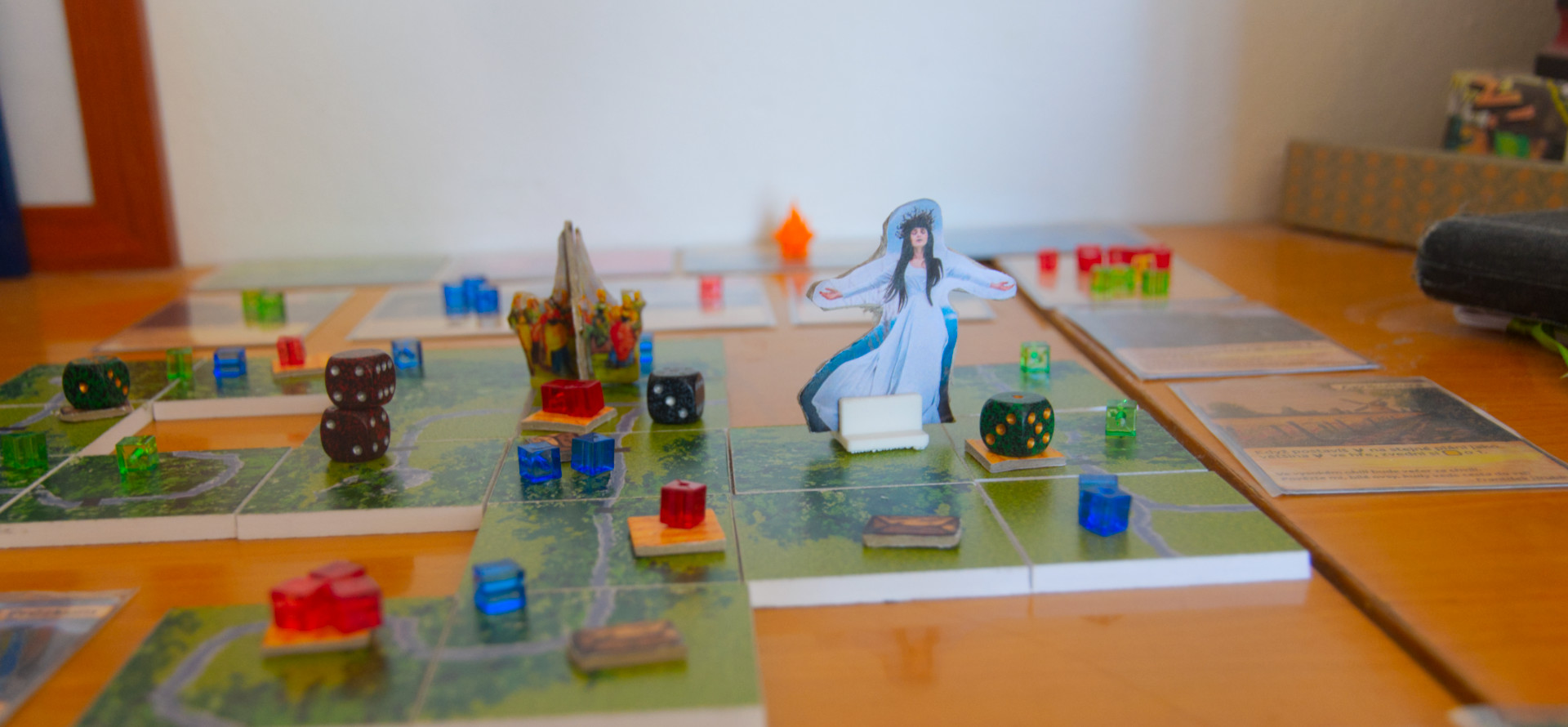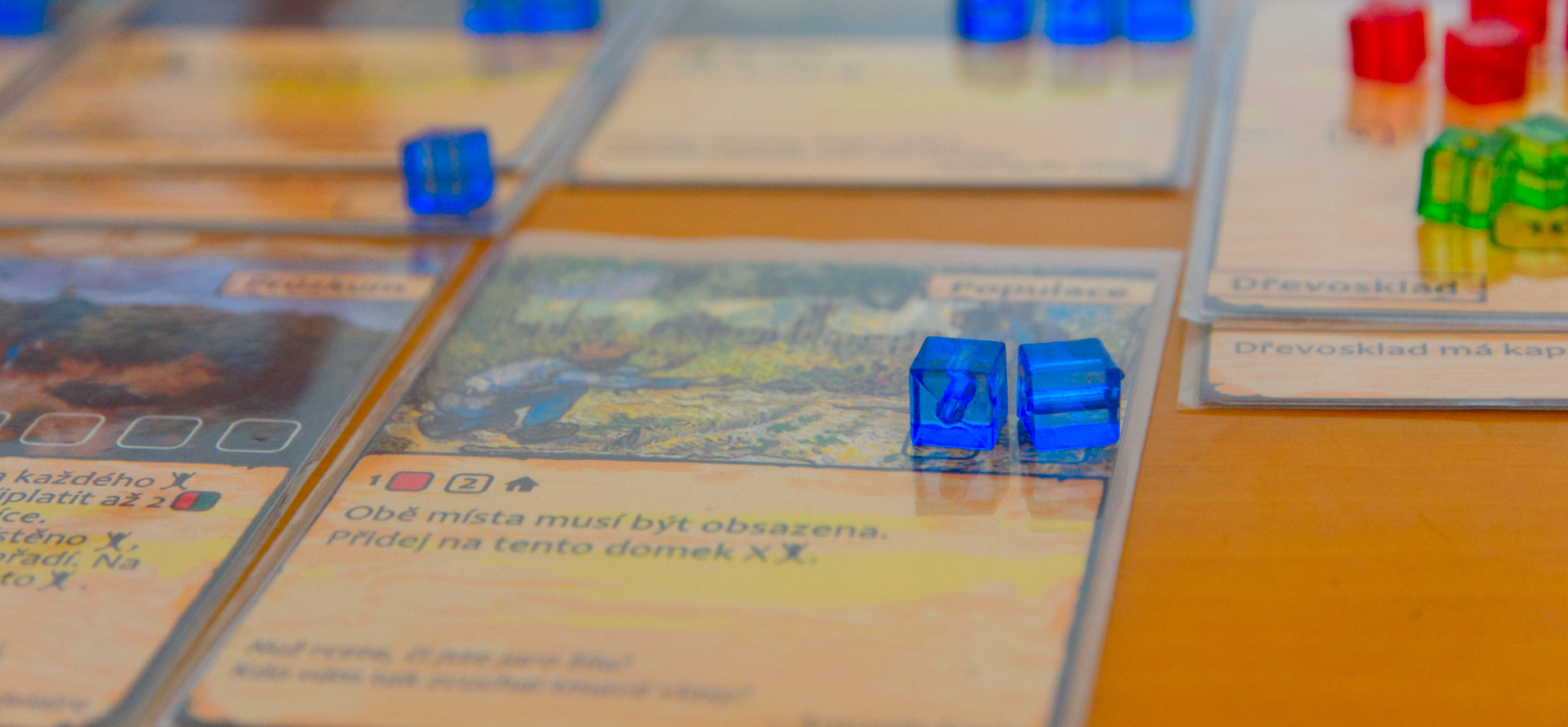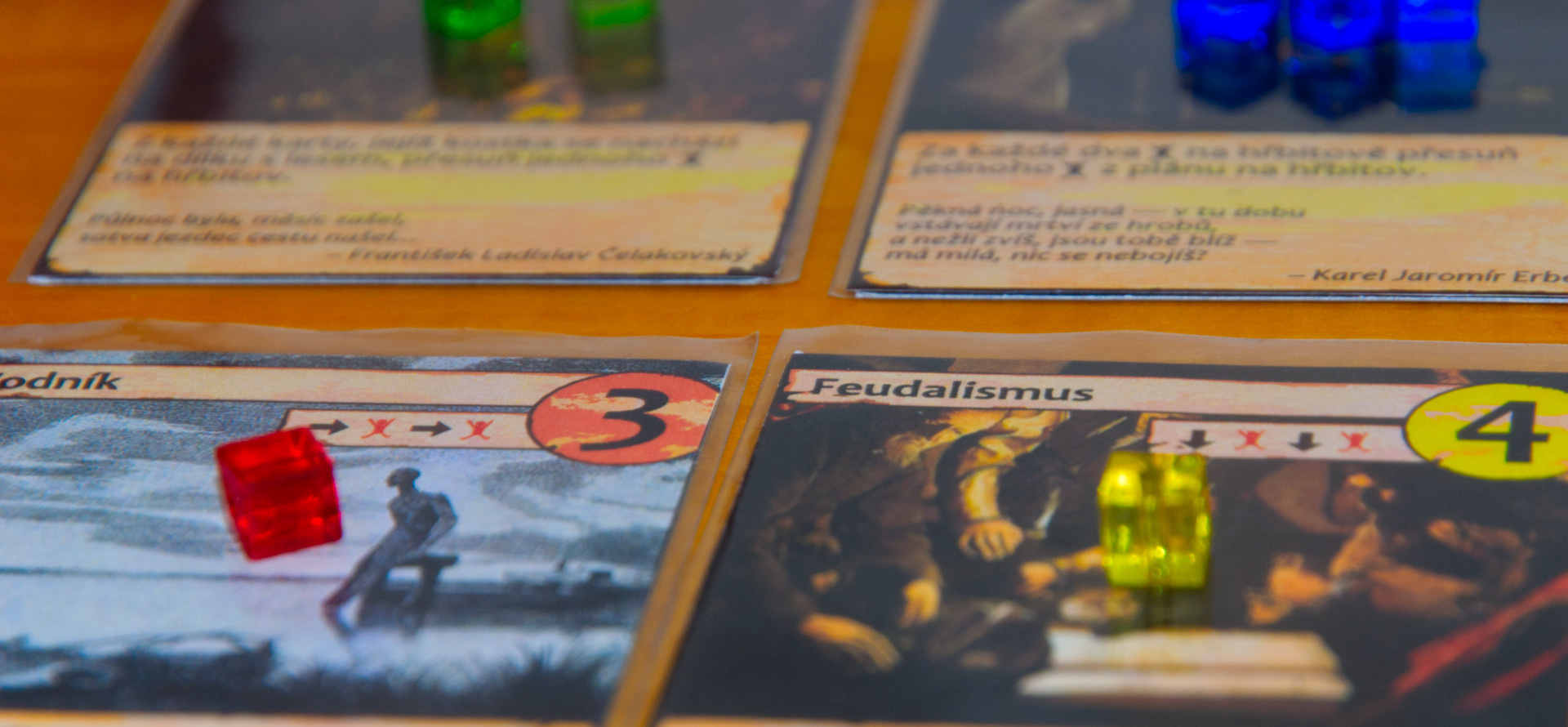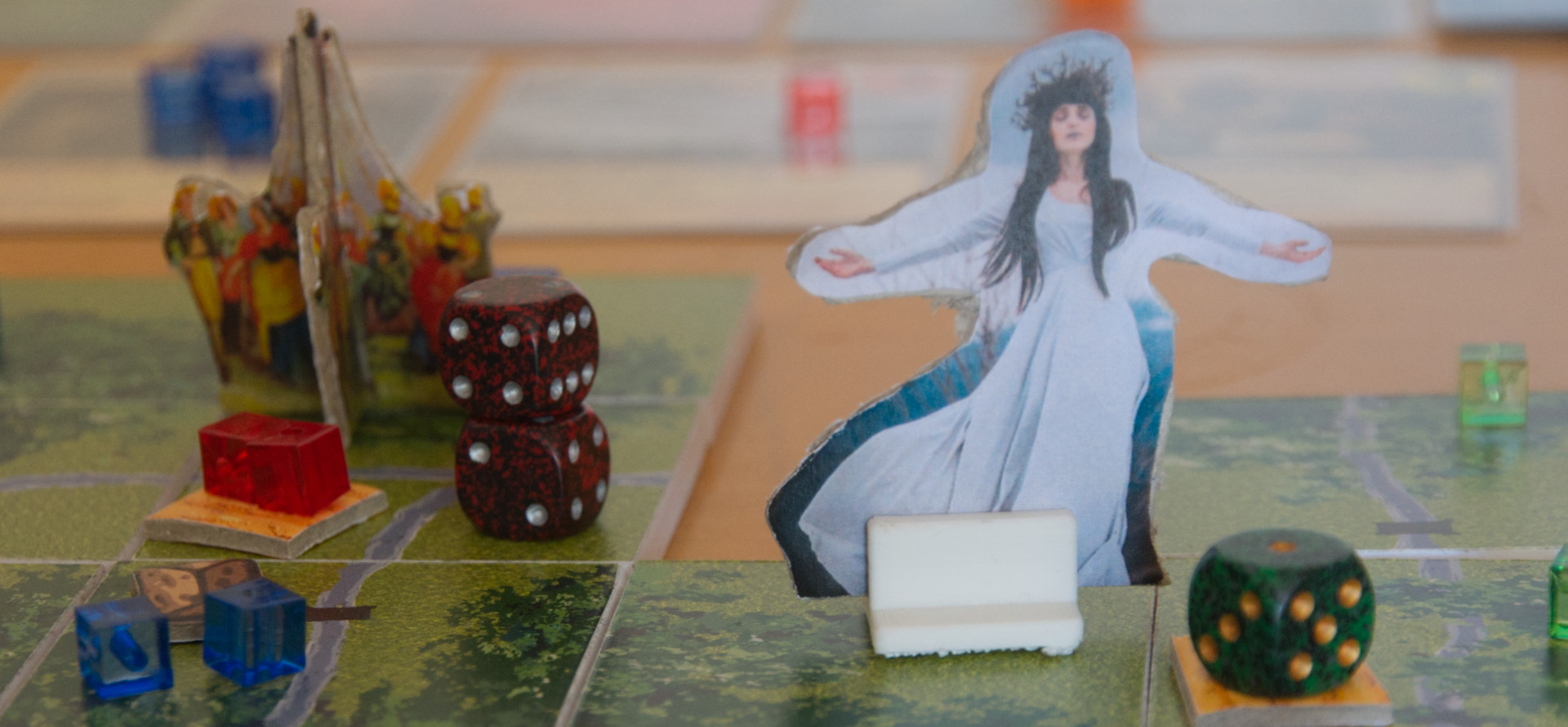MORANA
Find out how the game plays in 5 slides or less and download sample cards explaining the game.
I created this game out of my love for Central-European folklore, which – despite its growing popularity owing to ever-more famous Witcher – is still a bit exotic and outandish to western players. Moreover, I wanted to create a co-op game which would be as euro as possible, with limited and managable chance and traditional euro-style features.

1–4 PLAYERS | 60–120 MINUTES | MEDIUM/LIGHT WEIGHT | 12+ YO
After 3 years (9 seasons–turns when players play and 3 winters, when Morana's influence haunts the village) the village's marker must be in the second half of the well-being track for the players to win. At the end of the game, Morana substracts points for various perils and disasters, such as villagers in the graveyard or unexplored woods around the village. In the beginning of each season, players choose one folk festival which yields thematic bonuses.

PLAYER'S TURN
Each player has basic cards in front of them, such as movement, exploring, building a house, harvesting wood etc. The player draws a card from the deck, then, takes 3 actions, and each can be either playing a card from hand, adding it to the others on the table or resolving its immediate effect, or activating the card by paying the price in wood or food and moving villagers (blue cubes) from the board on the slots on it.

VILLAGER MANAGEMENT
Each card activated by villagers puts a dice on certain type of terrain, such as woods or river, with a specific number on the top, according to the card. Only the villagers from the tile where the die was placed or an adjecent one can be put on the card. In the beginning of player's turn, all of their dice turn by the amount of points as is the number of workers on the card generating the die and when the die would read zero, the job is done. Thus, putting more villagers on the job makes the job go faster, nevertheless, each player needs villagers and more villagers require more food and houses in winter. Moving the villagers effectively is essential, as well as resource management and coordination of players' plans and needs.

MORANA, THE GODDESS OF WINTER AND DEATH
After each player's turn, Morana moves in a directon given by the colour of the top card of the drawing deck, moving the villagers in her path to the graveyard and possibly triggering one of her four disasters. Thanks to this being directed by the top card of the deck, the players always know what Morana will do in the next turn and can prepare for it and mostly even prevent losing any villagers at all. On the other hand, always mitigating Morana means that there are not that many actions left for building the village. Balancing threats with need for growth becomes one of the main concerns in the endgame.

COMPLEXITY, THEME, AND REPLAYABILITY
Morana is neither a mindless cube-pusher nor too brainy and complex game. Instead of forcing you to calculate 5 rounds ahead, it gives you multiple possibilities and lets you weigh your decisions, all the while telling the story of the villagers, whose maypole celebrations were crashed by a water-sprite or who suffer under a heavy toll of taxes from their feudal lords. All of this is supported by snippets of poetry and classical paintings used as art. Concerning replayability, there are 8 Morana's cards (4 are drawn in the beginnning) and 8 progress cards (which are different means of generating culture, a prerequisite for certain cards, and well-being; 2 are drawn for every game) and there are close to a 100 cards in the drawing deck and over 80 tiles. This gives the game a lot of variety while it does not diminish the co-op mechanics to just fighting the chance: players are ever struggling against heavy odds, but the circumstances are wildly different each time you set-up the game.
HOW FAR ALONG IS IT?
- Core mechanics tested and finalised
- Functional prototype
- Balancing
- Wide testing
- Translation editing
So far, what Morana needs the most, is more testing of the 4-player games, which were hard to come by lately. In 2 and 3 players, the game works great, it is fluent, seamless and fun. I feel that many people really care about their villagers or at least hate Morana for her neverending meddling. What I think would be great is to have more games with completely new players to see how hard is the game for them – some cards might need a bit of balancing.
For further cooperation, I need to translate the game, but since there is quite a lot of poetry, which has mostly never been translated to English, this process will take a while. In case of further cooperation, I can send a version without the verses. Concerning the art, I made the graphics myself, but the paintings are of course taken from Wiki commons or online galleries (about 80 % from this one). It is not allowed to use those photos of the paintings for commercial use, but I am sure that some kind of an agreement with the gallery could be arranged and it would a) retain the striking beauty of classic paintings and b) cut down the costs for art considerably.
SAMPLE CARDS EXPLAINED
Have closer look at the game via the sample cards with explanations.
